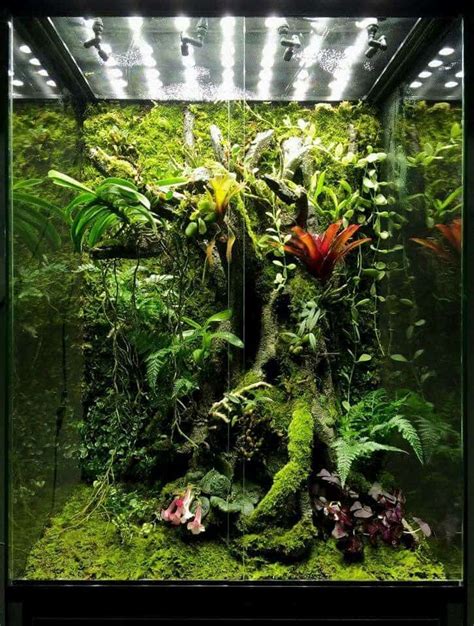Terrariums have emerged as captivating ecosystems, offering a miniature glimpse into the intricacies of nature. Bioactive terrariums, in particular, stand out as living displays that harness the symbiotic relationship between animals and plants to create a self-sustaining environment. These terrariums provide not only a window into nature but also a valuable opportunity to understand and appreciate the delicate balance of life.

Benefits of Bioactive Terrarium Animals
Introducing animals into a bioactive terrarium brings a host of benefits:
- Nutrient Cycling: Animals release waste products that become nutrients for the terrarium’s plants. This natural recycling process reduces the need for artificial fertilizers.
- Environmental Regulation: Animals move around the terrarium, aerating the substrate and removing organic waste, which helps stabilize the environment and prevent disease.
- Behavioral Enrichment: Animals provide entertainment and enrichment for terrarium inhabitants. Their natural behaviors, such as foraging and burrowing, add interest to the ecosystem.
Choosing the Right Bioactive Terrarium Animals
The key to a successful bioactive terrarium is selecting animals that are compatible with the specific plants and environment. Factors to consider include:
- Size: Animals should be small enough to fit comfortably within the terrarium’s dimensions.
- Activity Level: Choose animals that are active enough to participate in nutrient cycling and aeration, but not so active that they disrupt the terrarium.
- Feeding Requirements: Ensure that the animals you select can be easily fed in the terrarium environment using live or prepared foods.
- Substrate Preference: Select animals that thrive in the terrarium’s substrate type, whether it be soil, sand, or gravel.
Table 1: Recommended Bioactive Terrarium Animals
| Species | Size (cm) | Diet | Substrate Preference |
|---|---|---|---|
| Springtails | 0.1-0.5 | Detritus | All |
| Isopods | 0.5-2.5 | Detritus, Plant Matter | Soil, Sand |
| Earthworms | 10-20 | Detritus, Soil | Soil |
| Snails | 5-10 | Plant Matter | Soil, Moss |
| Frogs | 5-15 | Insects, Worms | Humid Soil, Moss |
How to Introduce Animals into a Bioactive Terrarium
- Quarantine: Quarantine new animals for a period of time to observe for any signs of illness.
- Acclimatization: Gradually introduce animals to the terrarium environment by placing them in a smaller enclosure within the terrarium for a few days.
- Monitoring: Monitor animal behavior and terrarium conditions closely after introducing animals to ensure their well-being.
Troubleshooting Common Issues
- Unbalanced Populations: Monitor animal populations to prevent overcrowding or underpopulation, which can disrupt nutrient cycling and environmental regulation.
- Parasites: Keep an eye out for signs of parasites, such as mites or intestinal worms, and treat accordingly.
- Overfeeding: Avoid overfeeding animals, as excess food can lead to decomposition and imbalances in the terrarium environment.
Conclusion
Bioactive terrariums offer a captivating and educational way to experience the wonders of nature. By harnessing the symbiotic relationships between animals and plants, these terrariums create self-sustaining ecosystems that provide entertainment, enrichment, and a deeper understanding of the delicate balance of life. With the right choices and proper care, a bioactive terrarium can become a flourishing sanctuary for both animals and plants for years to come.





















